Norwegian Fjords 101: Where to Go, How to Explore & More
- October 14, 2025
- 5 Min Read
Long inlets carved by glaciers over several ice ages that later flooded with seawater, Norway’s western fjords are spectacular wonders of nature. The term fjord originates from the Norse fjoror, meaning to go, pass or cross over. And that’s exactly what the fjords do, cutting through and forming deep U-shaped valleys with snow-capped mountains and steep cliffs down which waterfalls cascade all around.
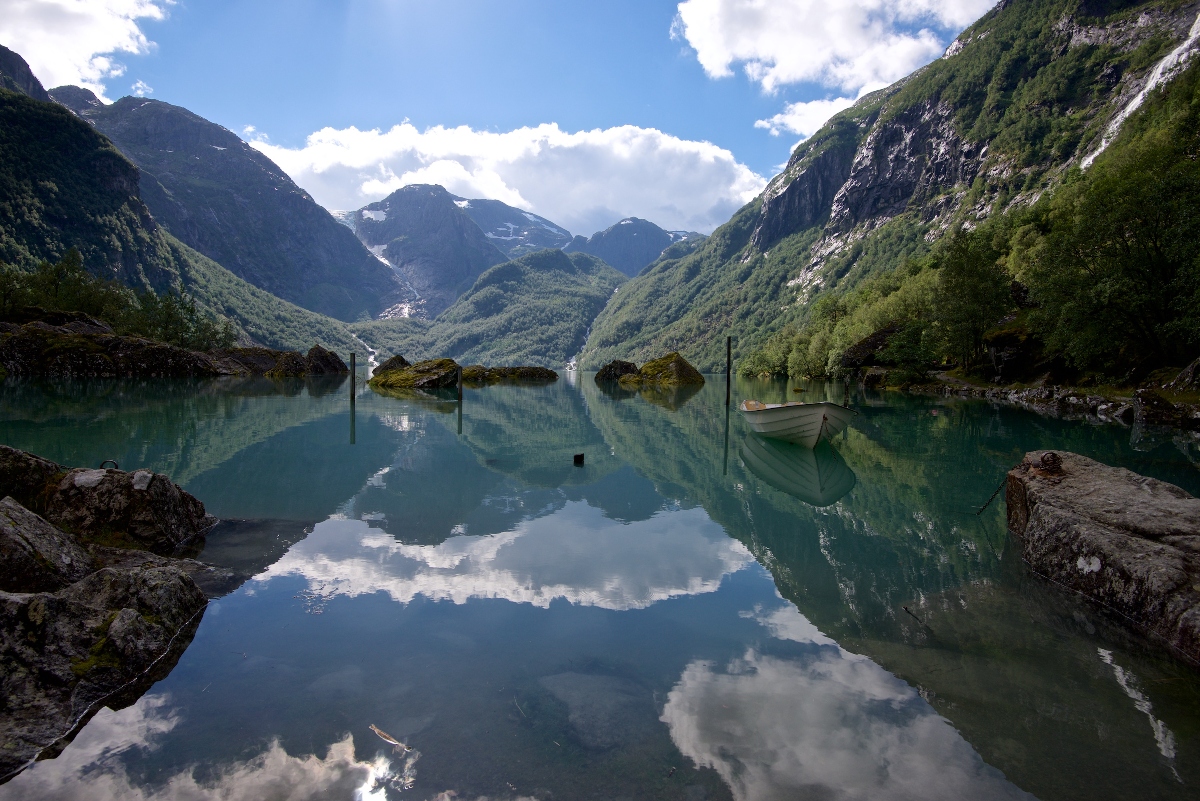
This breathtaking landscape, including quaint villages with bright red houses and grazing sheep dotting the coastal foothills, is generally best to explore via cruise. Below, our introductory guide to some of Norway’s most famous fjords, two of which are UNESCO-designated World Heritage Sites, and how to visit them.
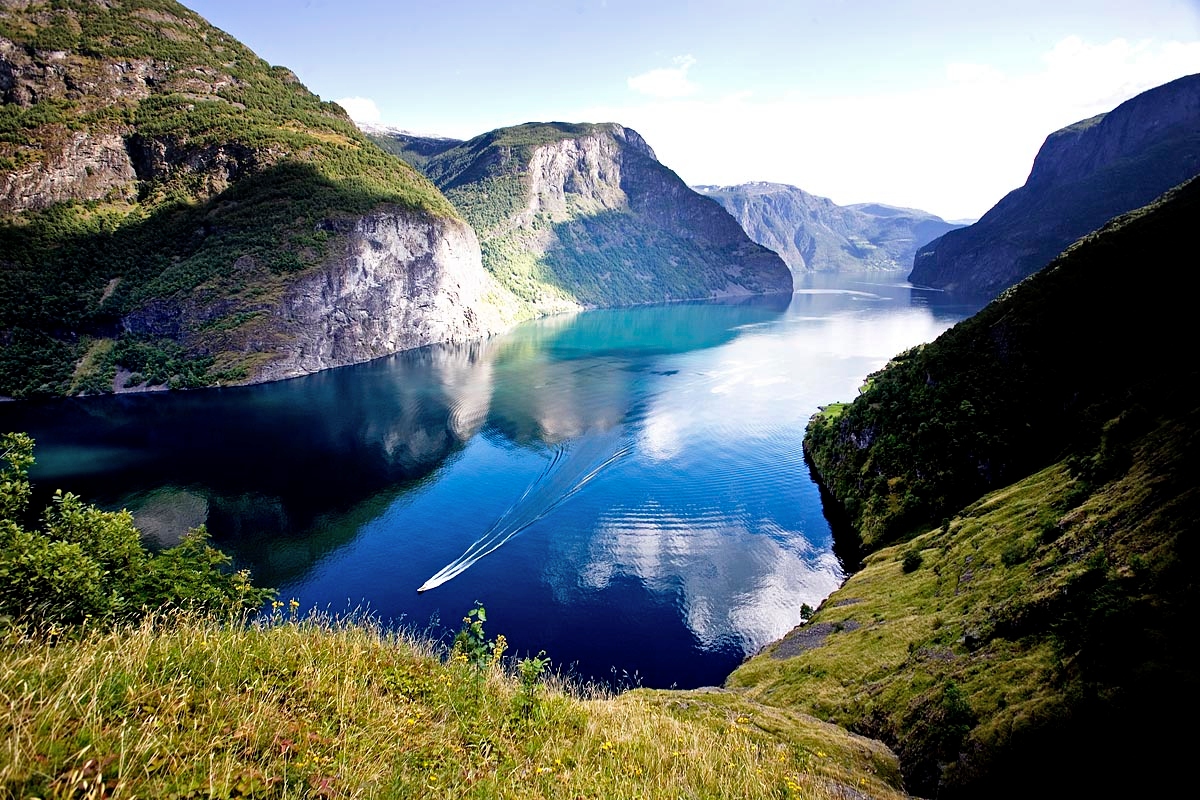
Our Guide to Exploring Norway’s Best Fjords
Norway’s coastline, from north to south, boasts more than 1,000 fjords. However, some of the most dramatic of these are concentrated in western Norway, also known as Fjord Norway. And in some cases, it’s the narrow arms or branching inlets of a larger fjord that have gained the greatest popularity for their jaw-dropping scenery (the UNESCO-recognized Nærøyfjord is in fact an arm of the Sognefjord, described below).
Sognefjord
Often called the king of fjords, Sognefjord is the longest in all of Norway, stretching more than 124 miles into the interior of the country. It is also the widest but has several side arms, and measures nearly 4,300 feet at its deepest. It sits just north of Bergen, in the center of western Norway, making it relatively easy to visit as part of a longer cruise or even a day cruise. My daughter and I did just that last summer, taking a train from beautiful Bergen to the town of Voss, then transferring to a bus from Voss to Gudvangen, where we embarked on an electric boat cruise and took in the stunning Nærøyfjord for two hours before disembarking in the cute village of Flåm.
Too busy to plan? We've got you covered.
Send us a quick inquiry, and we’ll pair you with an expert Travel Advisor who can handle all your trip details: a custom-designed itinerary, private guides and experiences, and vetted accommodations, often with valuable perks to pass along. Click to get started!
From Flåm, we took a train to Oslo with one transfer in between. While it sounds like numerous changes, it was all part of a seamlessly arranged Norway in a Nutshell day tour through top outfitter Fjord Tours, which specializes in one-day as well as multi-day fjord trips. The train and bus rides also allowed us to take in the mountain landscape and small towns along the way.
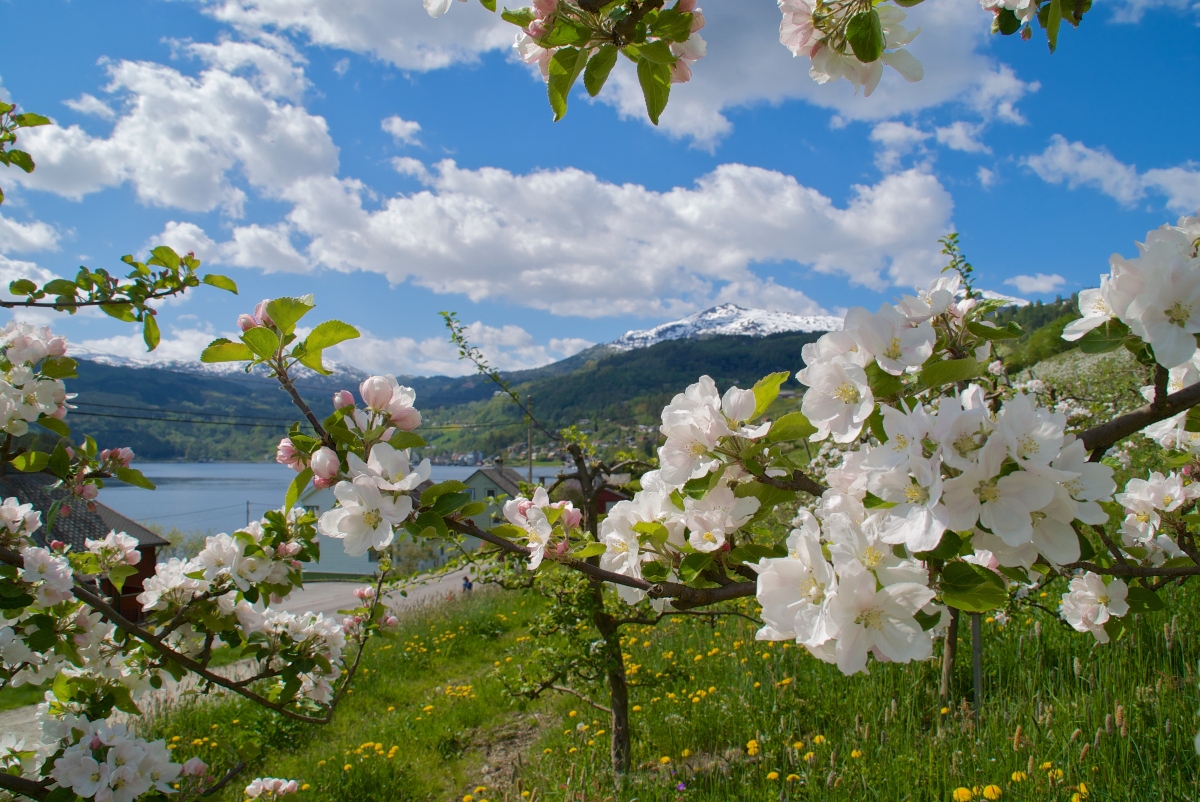
Hardangerfjord
South of Bergen, Hardangerfjord is the second-longest fjord in Norway, spanning 111 miles from the Atlantic Ocean into the Hardangervidda mountain plateau. The fjord is particularly beloved among Norwegians for its apple tree blooms in the spring and the cider production in the area. Two of Hardangerfjord’s side arms are quite famous in their own right. Its longest side arm, Sørfjord, is well-known Trolltunga (the Troll’s Tongue), a horizontal rock formation that juts out from a mountain above Ringedalsvatnet Lake. Hiking Trolltunga is demanding, requiring 10-12 hours.
Hardangerfjord’s other arm, Eidfjord, allows access to Vøringsfossen, one of the most impressive waterfalls in all of Norway. A new bridge constructed in 2020 across the valley allows for extra-thrilling viewing platforms.
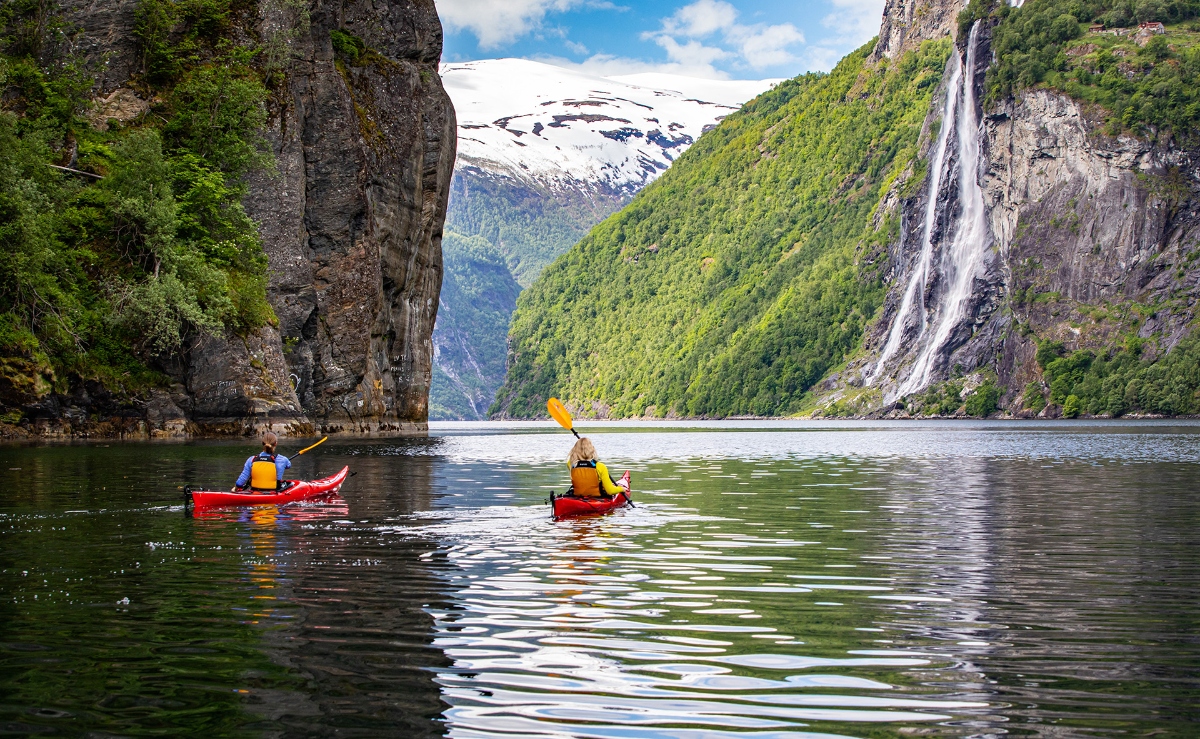
Geirangerfjord
Farther north, Norway’s other UNESCO-recognized fjord, Geirangerfjord, is equally awe-inspiring and gives travelers an opportunity to get up close to the legendary Seven Sisters waterfalls as they plunge some 820 feet below. (The falls are more visible as snow melts during the late spring to summer period.) Kayaking on the fjord is also popular, and local outfitter Geiranger Kayak Center at Homlong is the place to go. Other options include full-day cruises departing from the Art Nouveau town of Alesund or self-driving closer to the fjord from Alesund. Fjord Tours also offers a Geirangerfjord in a Nutshell tour.
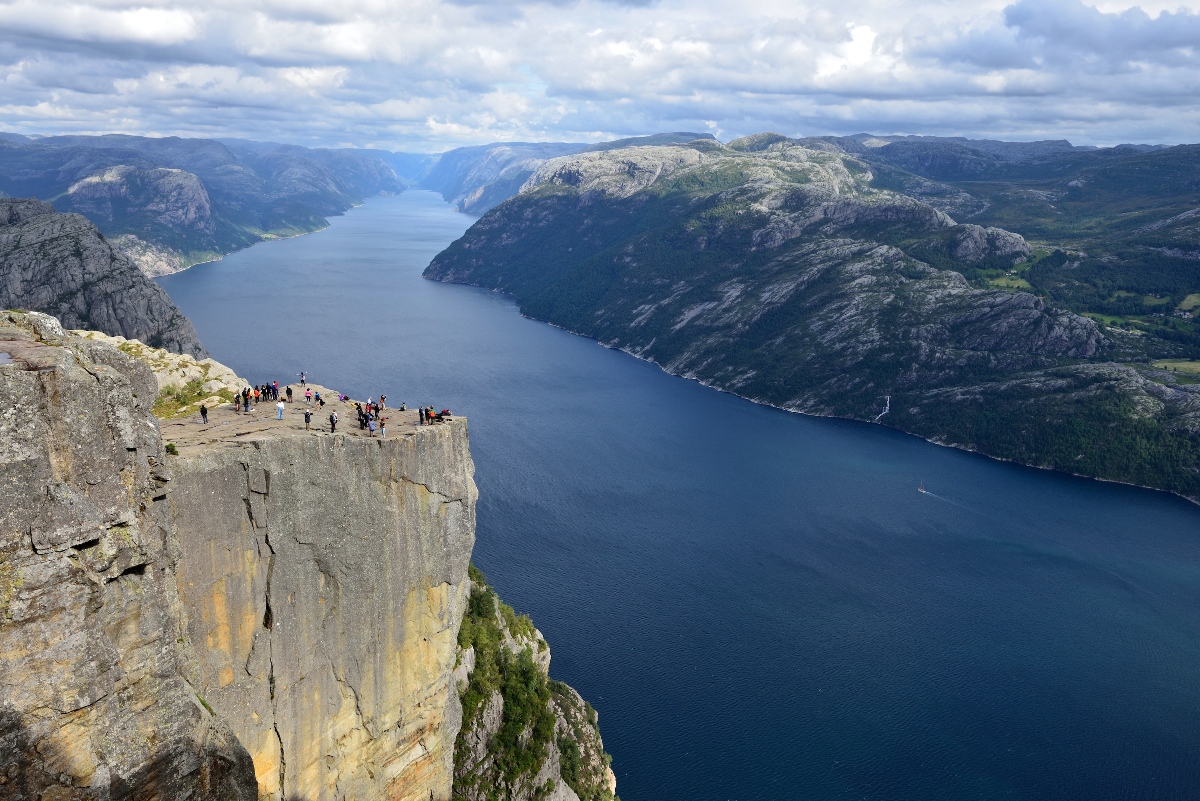
Lysefjord
A 45-minute drive from Stavanger, Lysefjord is one of the easier fjords to get to; there are also day cruise options from Stavanger. Hikers love the region for its outdoor activities. In the Ryfylke district, Preikestolen (Pulpit Rock), which can be seen from below on a boat but rewards phenomenal views from the top, is a main attraction. It was even featured in Mission: Impossible-Fallout. It’s about a four-hour hike to the top and many tour operators include it as part of their itinerary for Lysefjord.
Several cruise companies, including Norway’s own Hurtigruten, offer multi-day cruises heading north or south through the fjords and stopping in cities such as Bergen, Trondheim and Tromsø. Wintertime itineraries typically also include chances to see the Northern Lights. For off-path itineraries that combine fjords, cities and lesser-known regions of Norway such as Hegeland, consider a top outfitter such as Up Norway.
Ultimately, no matter how and which fjord(s) you visit, Norway’s incredible beauty will leave a lasting impression on you and your crew.
Relevant Links:
Browse all destinations and accommodations in Norway on Ciao Bambino
How to plan an amazing Norway itinerary with kids
The best cool-weather summer vacations for families
72 hours in Copenhagen with kids
5 incredible places to see the Northern Lights
Cruising with kids: 11 great destinations to explore by ship
Photos courtesy of Visit Norway.
Editor’s note: This post was accurate when published. We advise checking independently for the latest information and updates. Ciao Bambino does not accept responsibility or liability for any errors or omissions in, or for any actions taken based on, the information presented.


 travel recommendations, inspiring adventures, and exclusive travel offers
travel recommendations, inspiring adventures, and exclusive travel offers